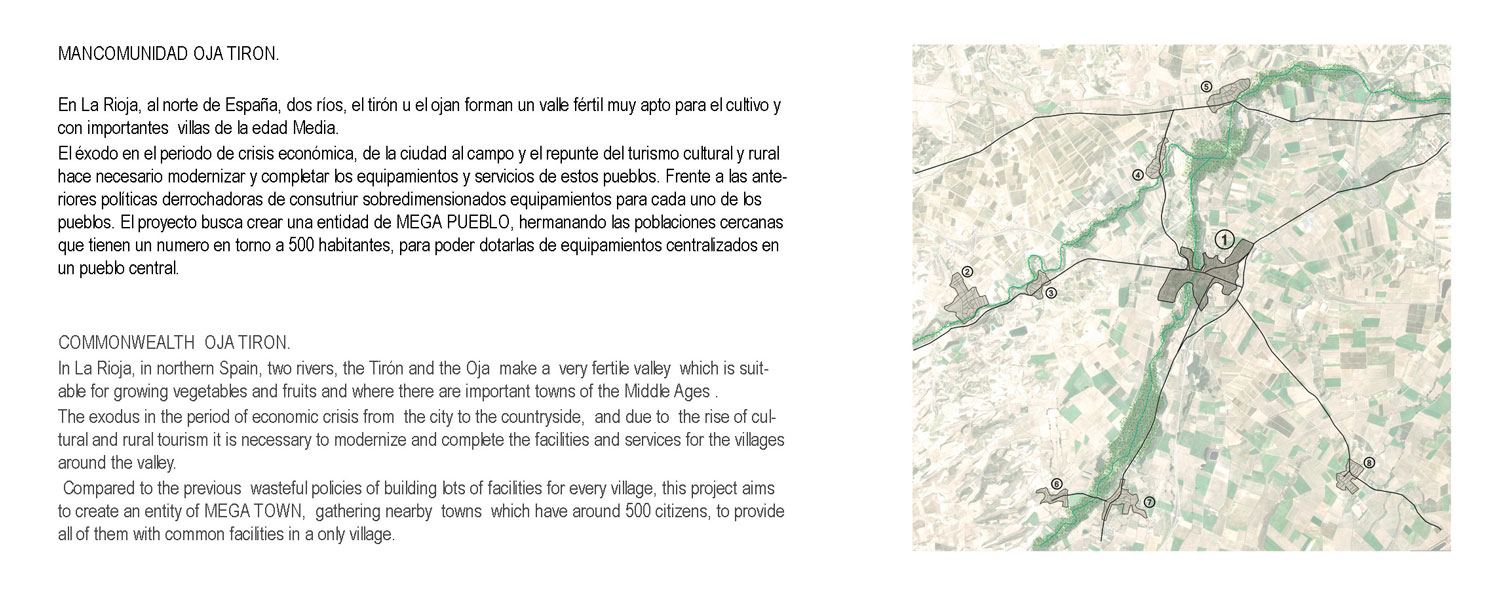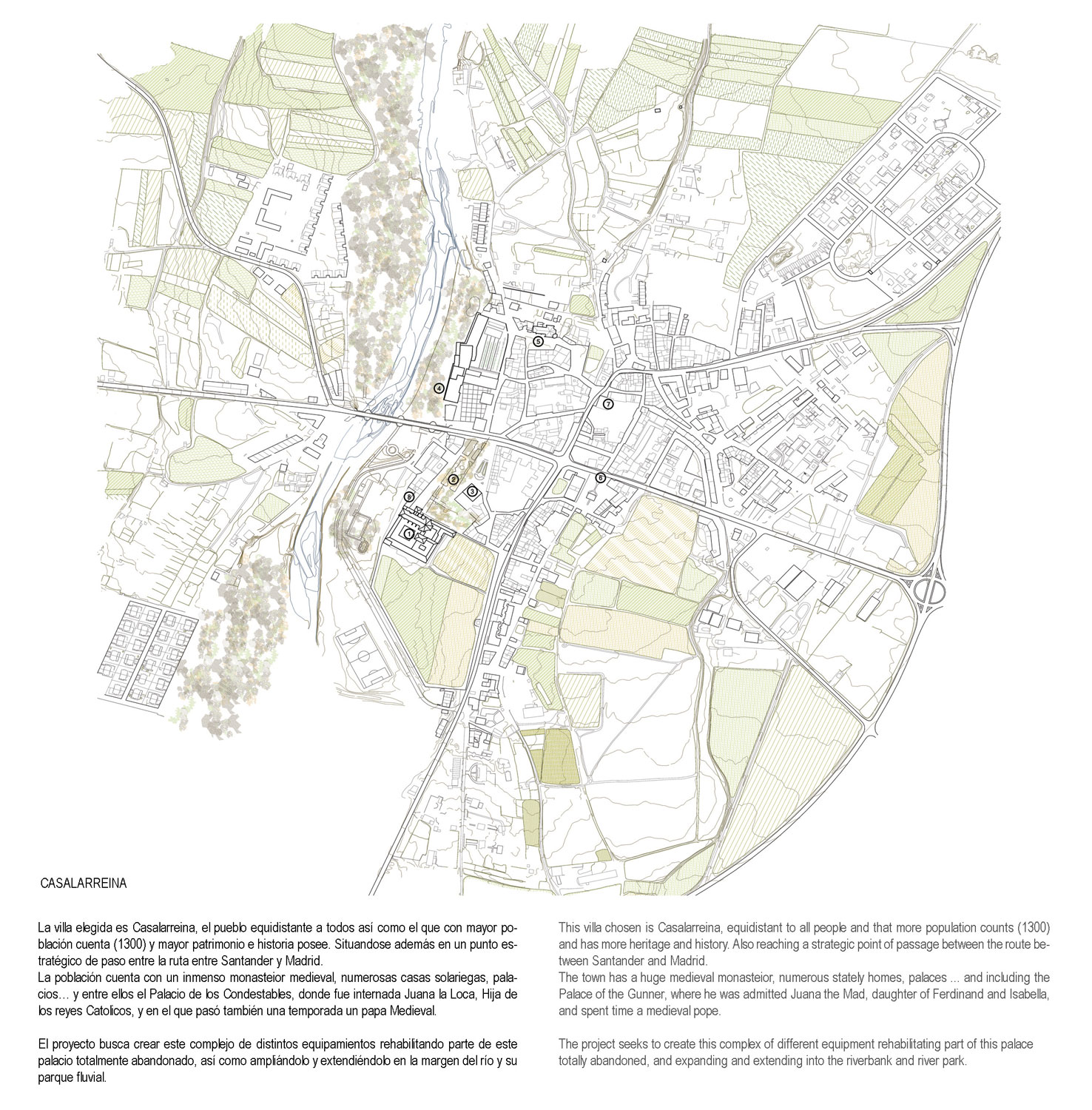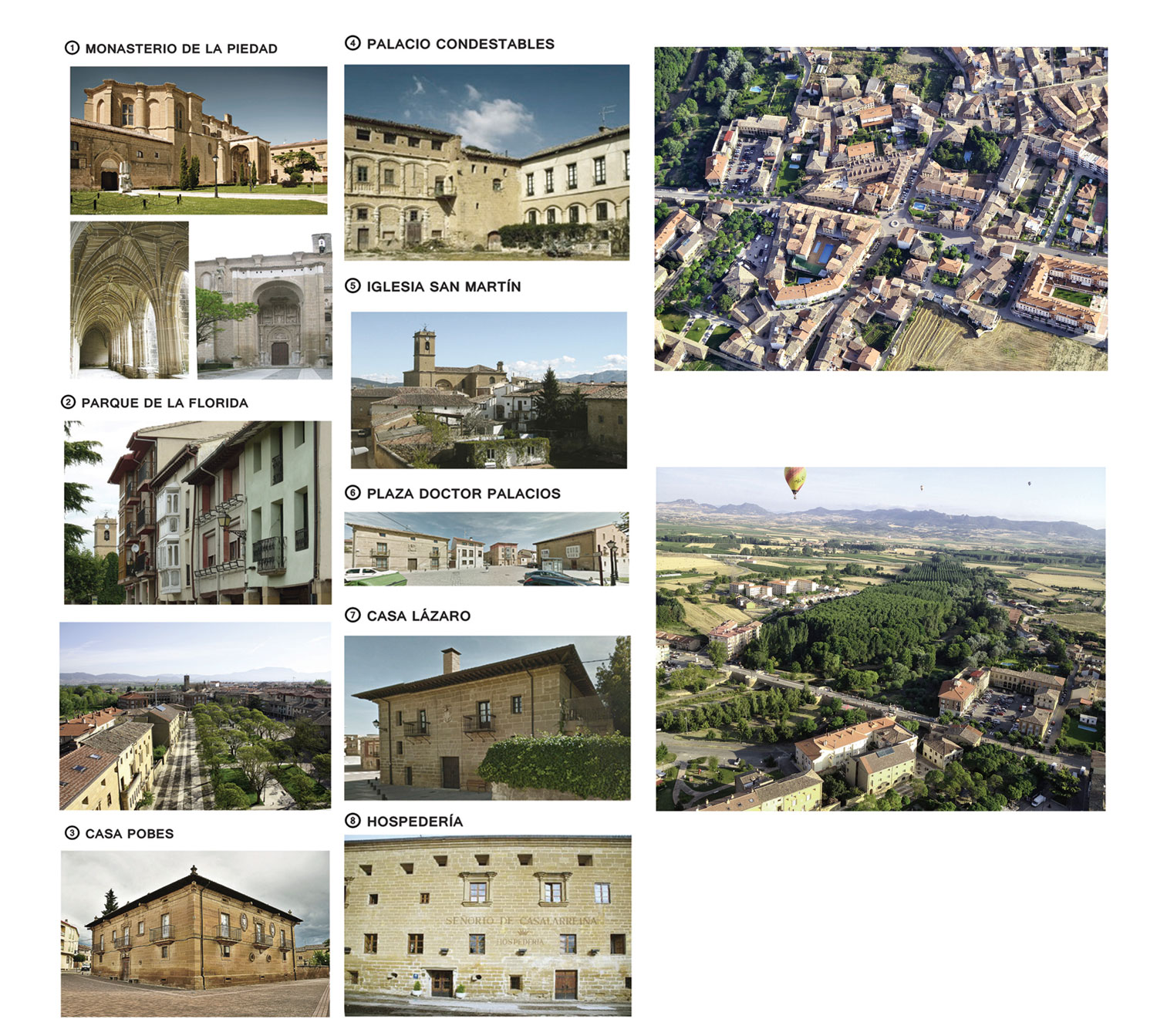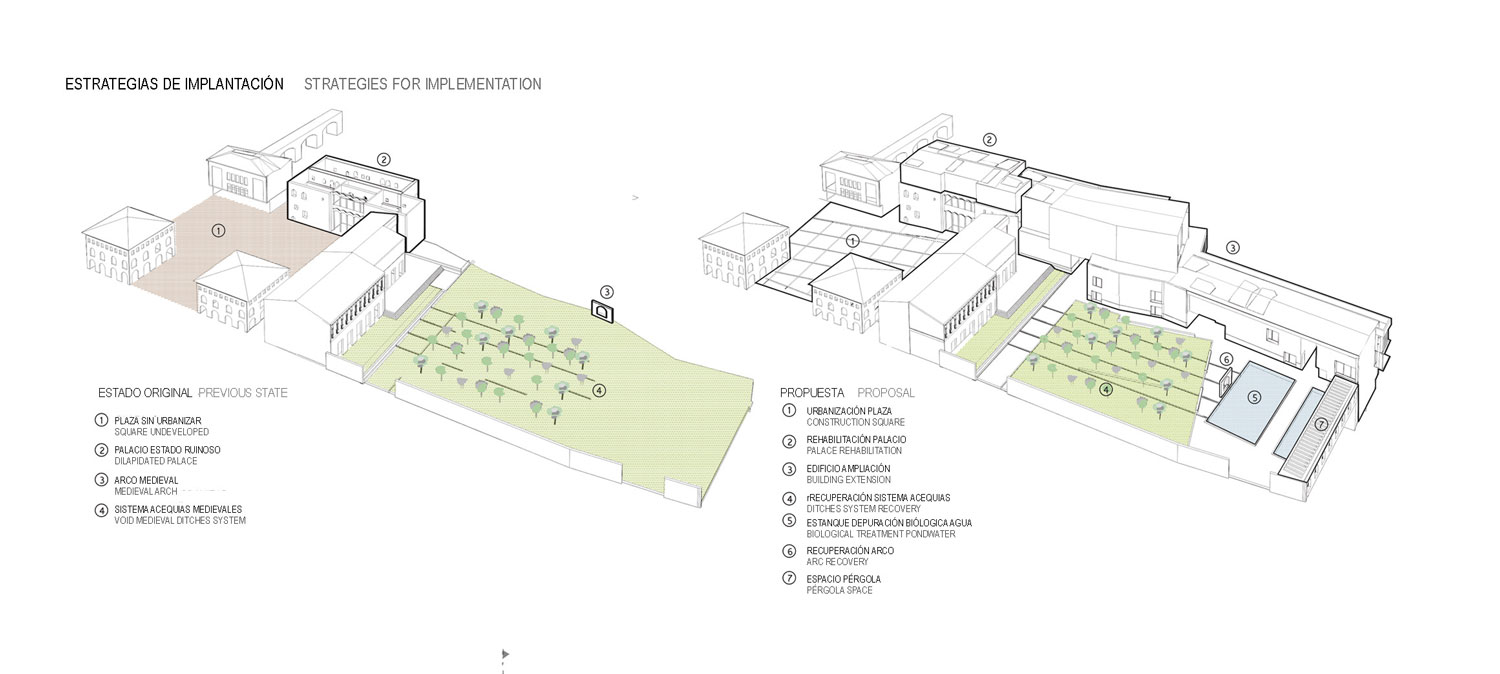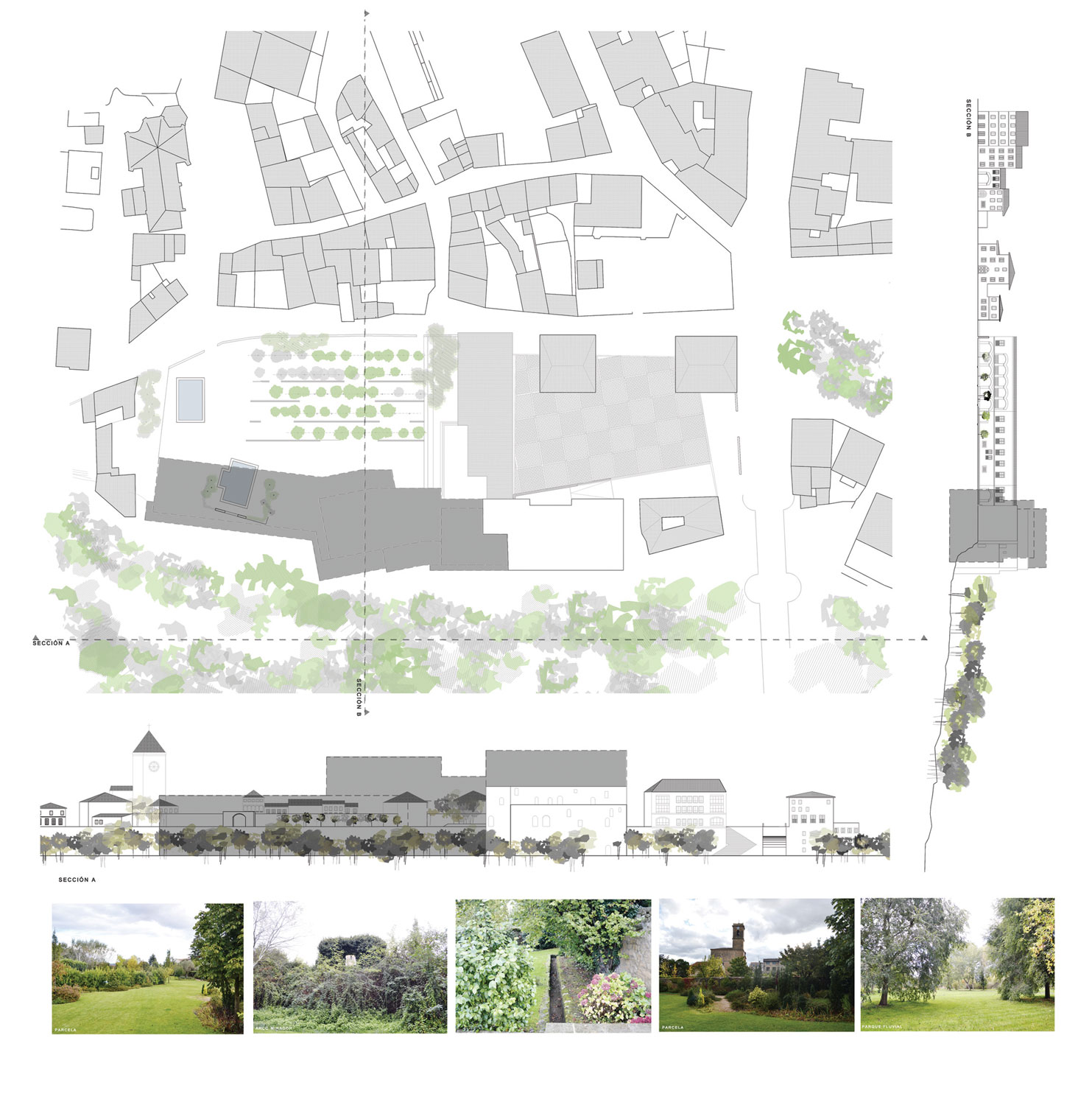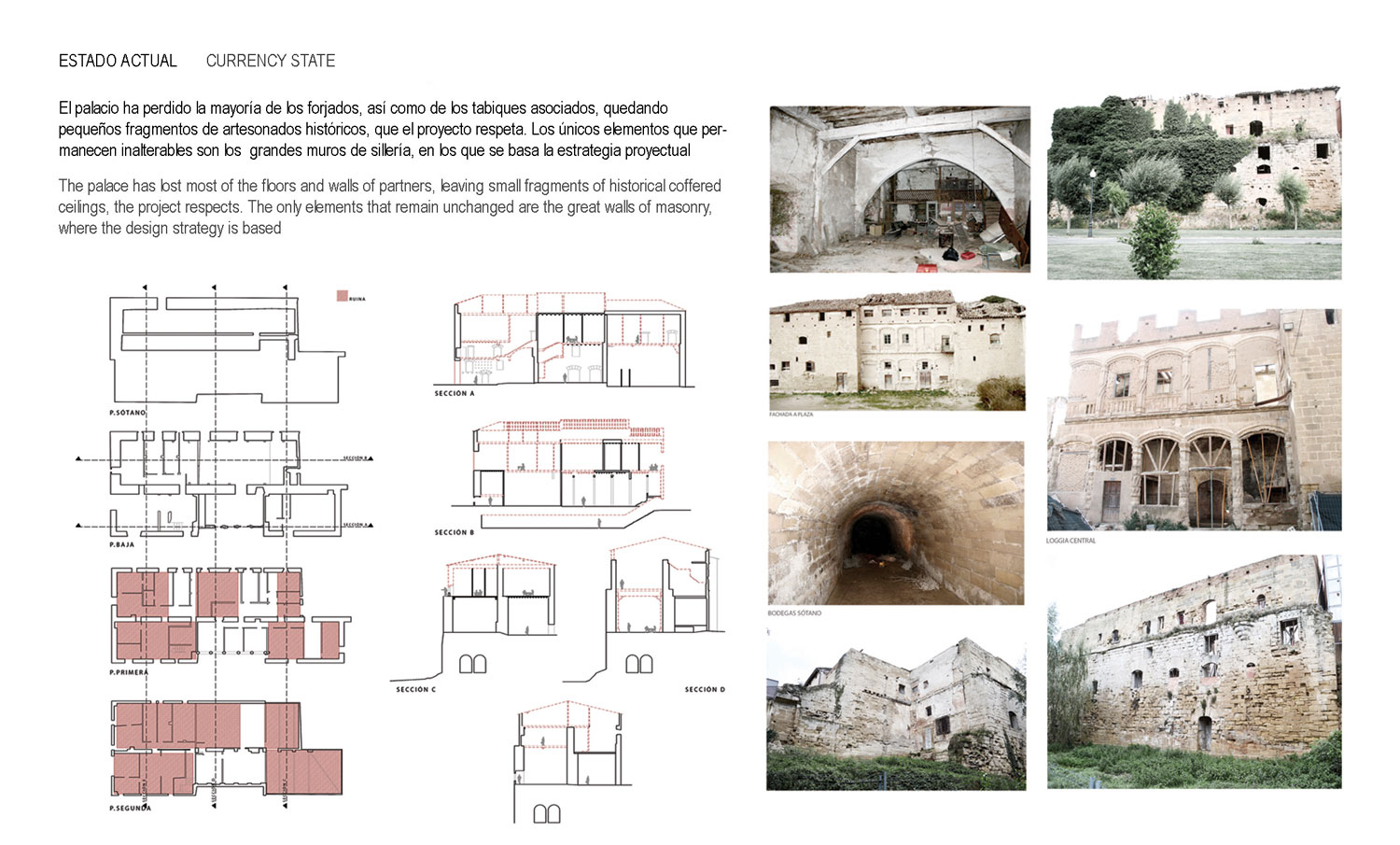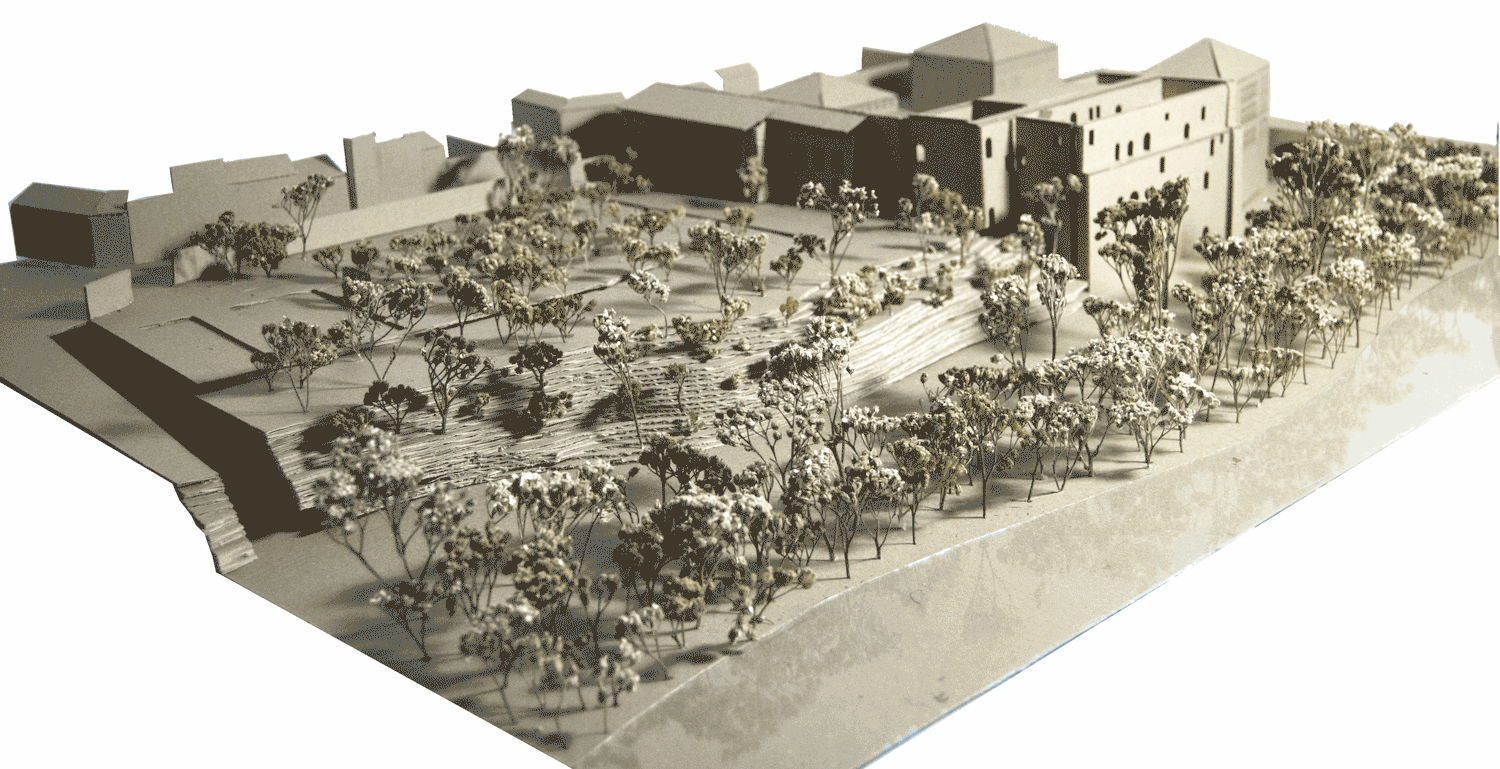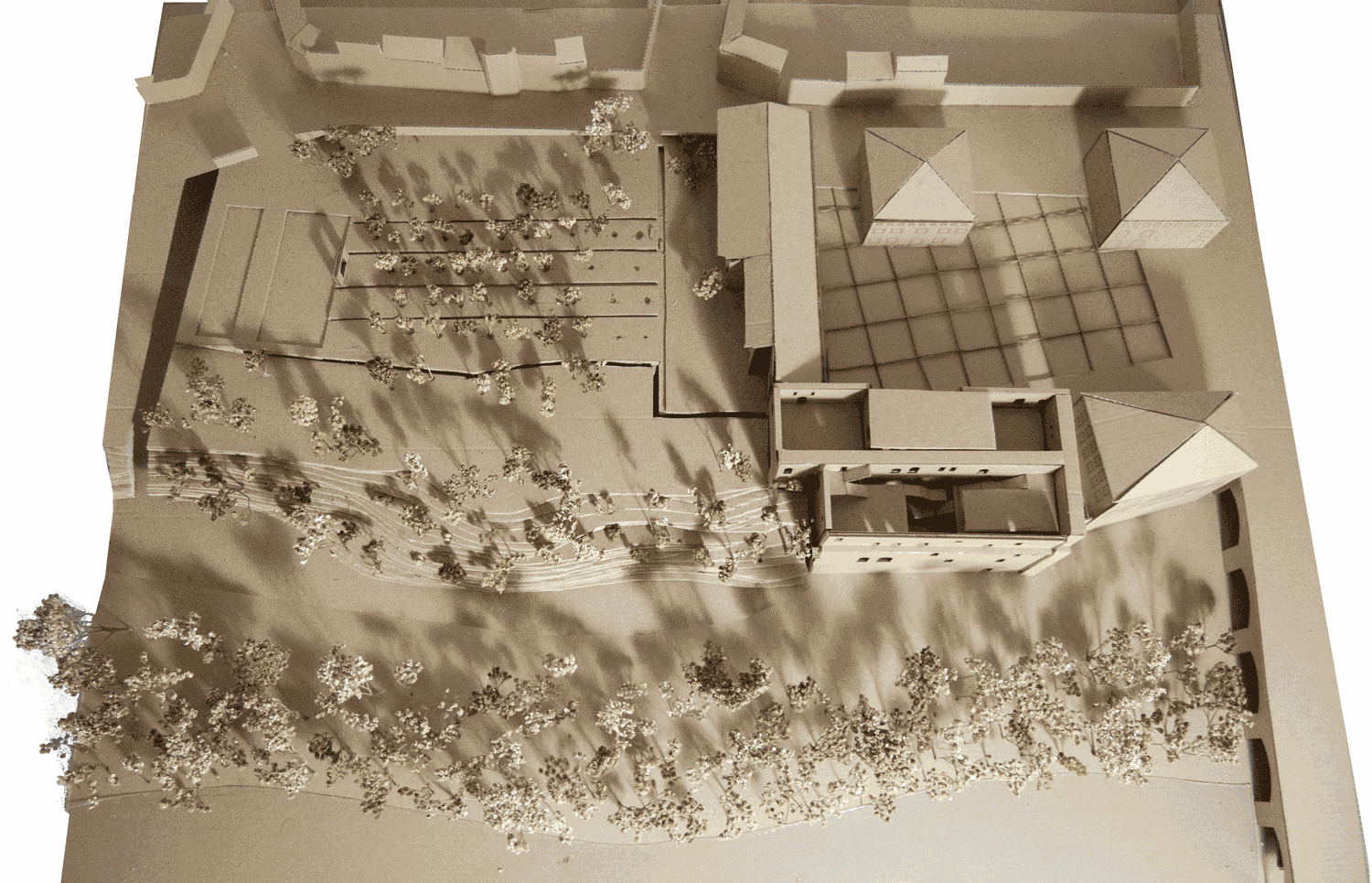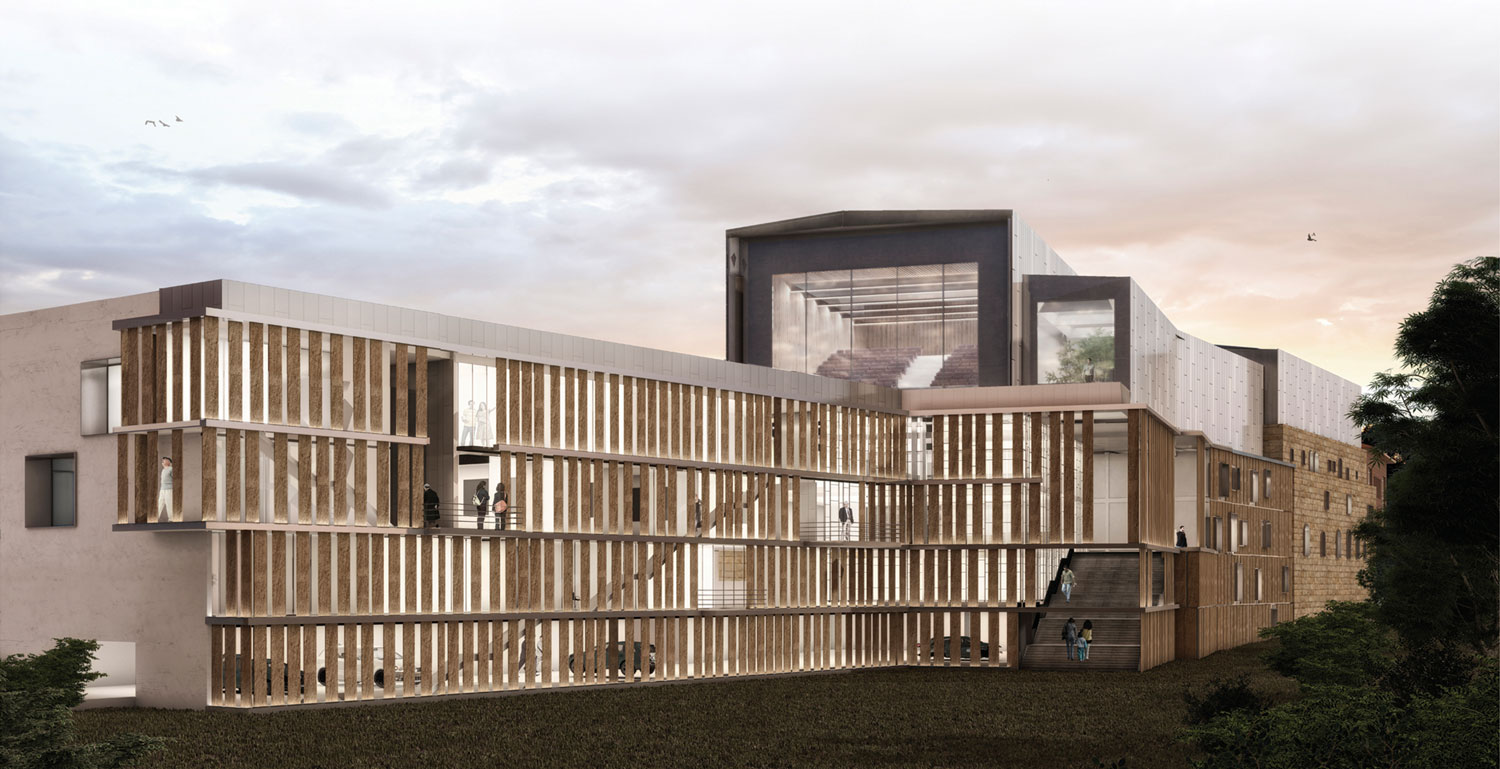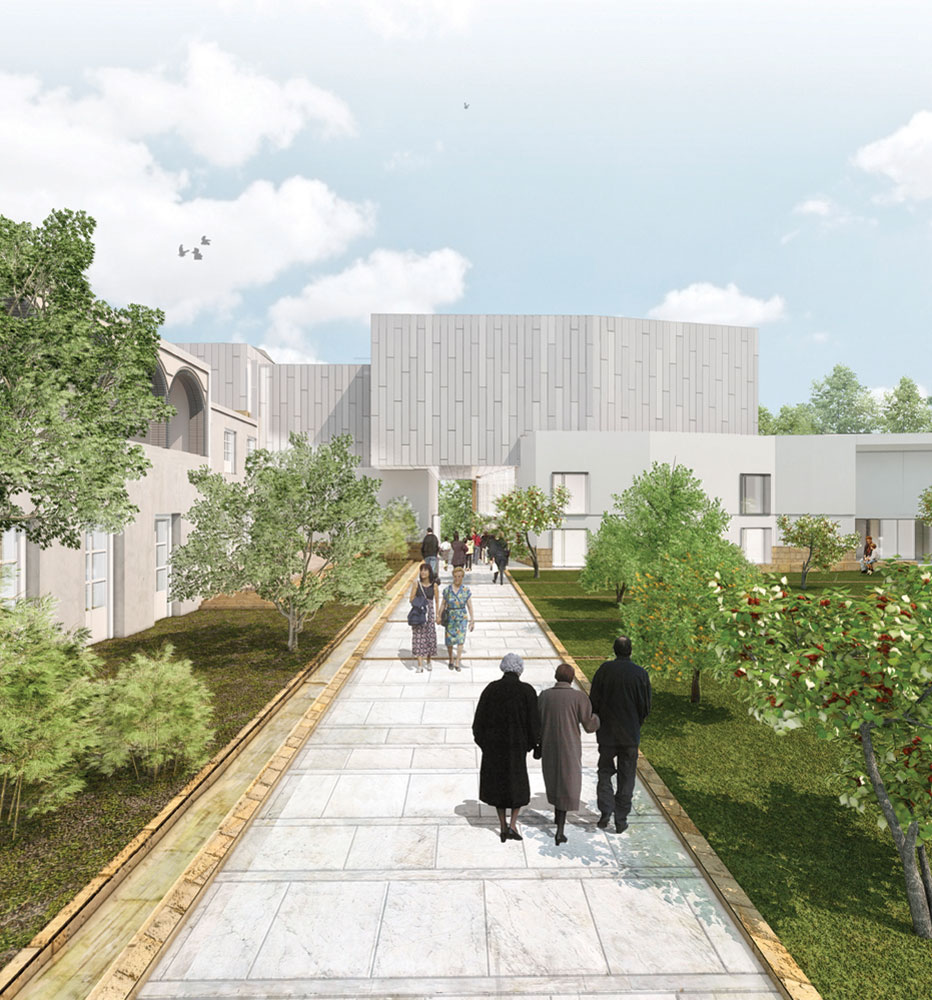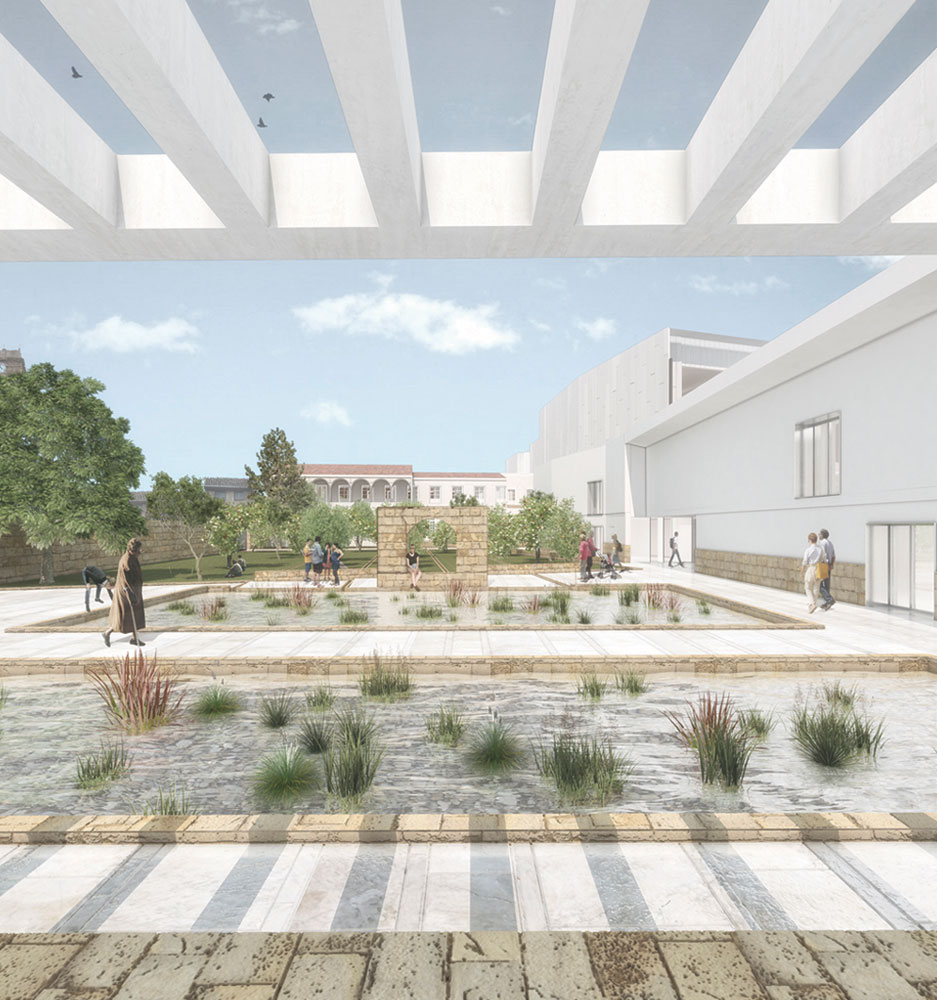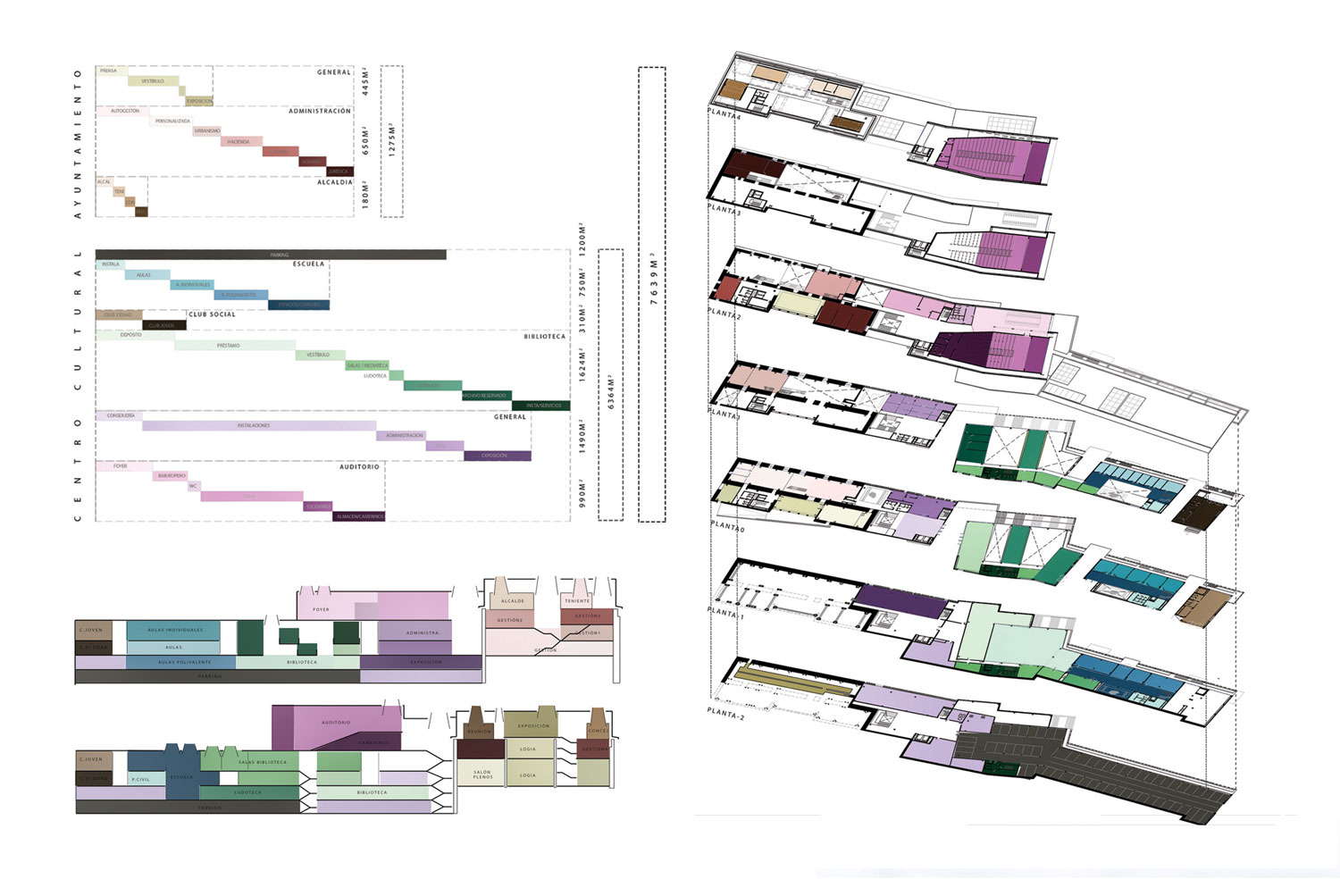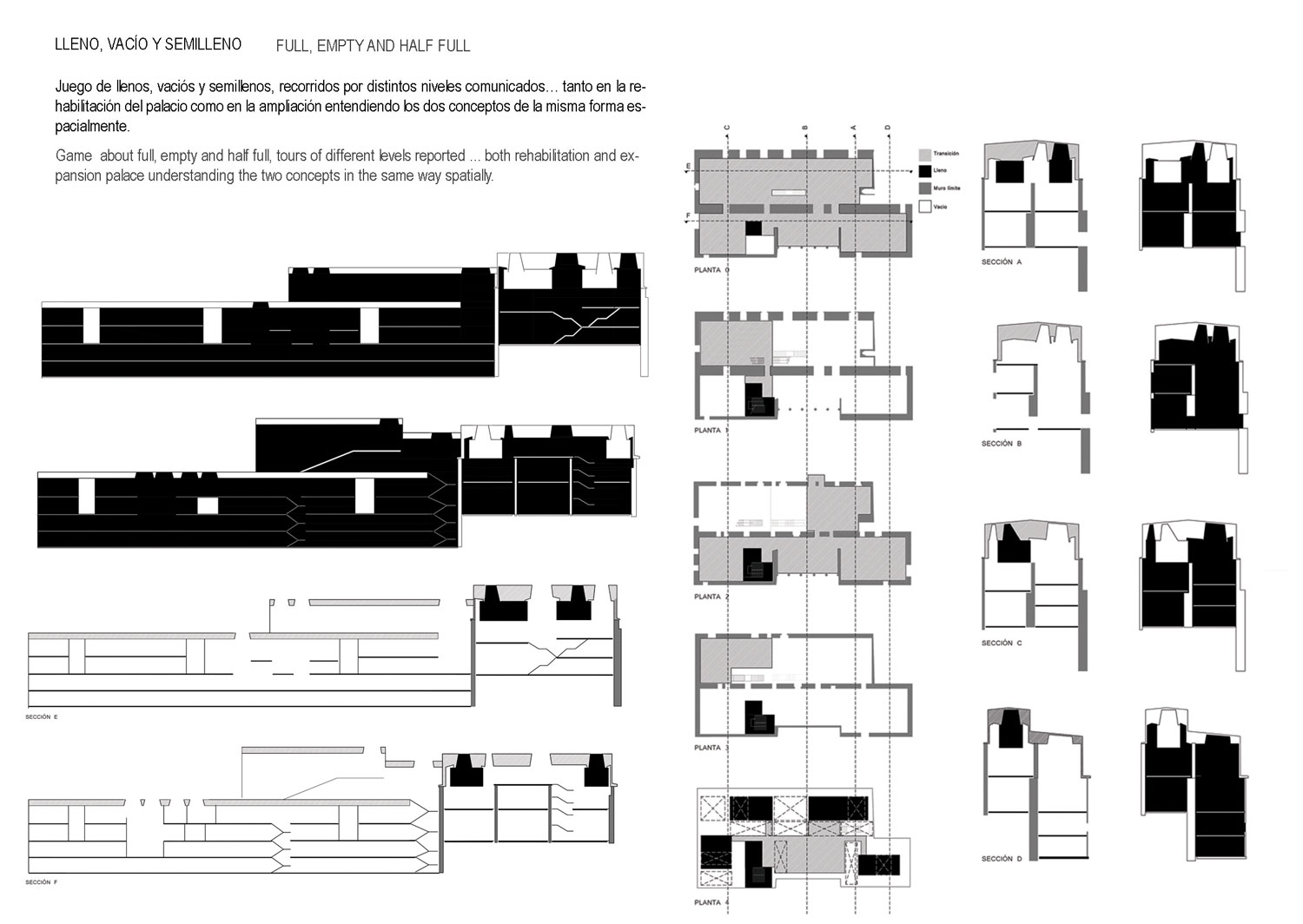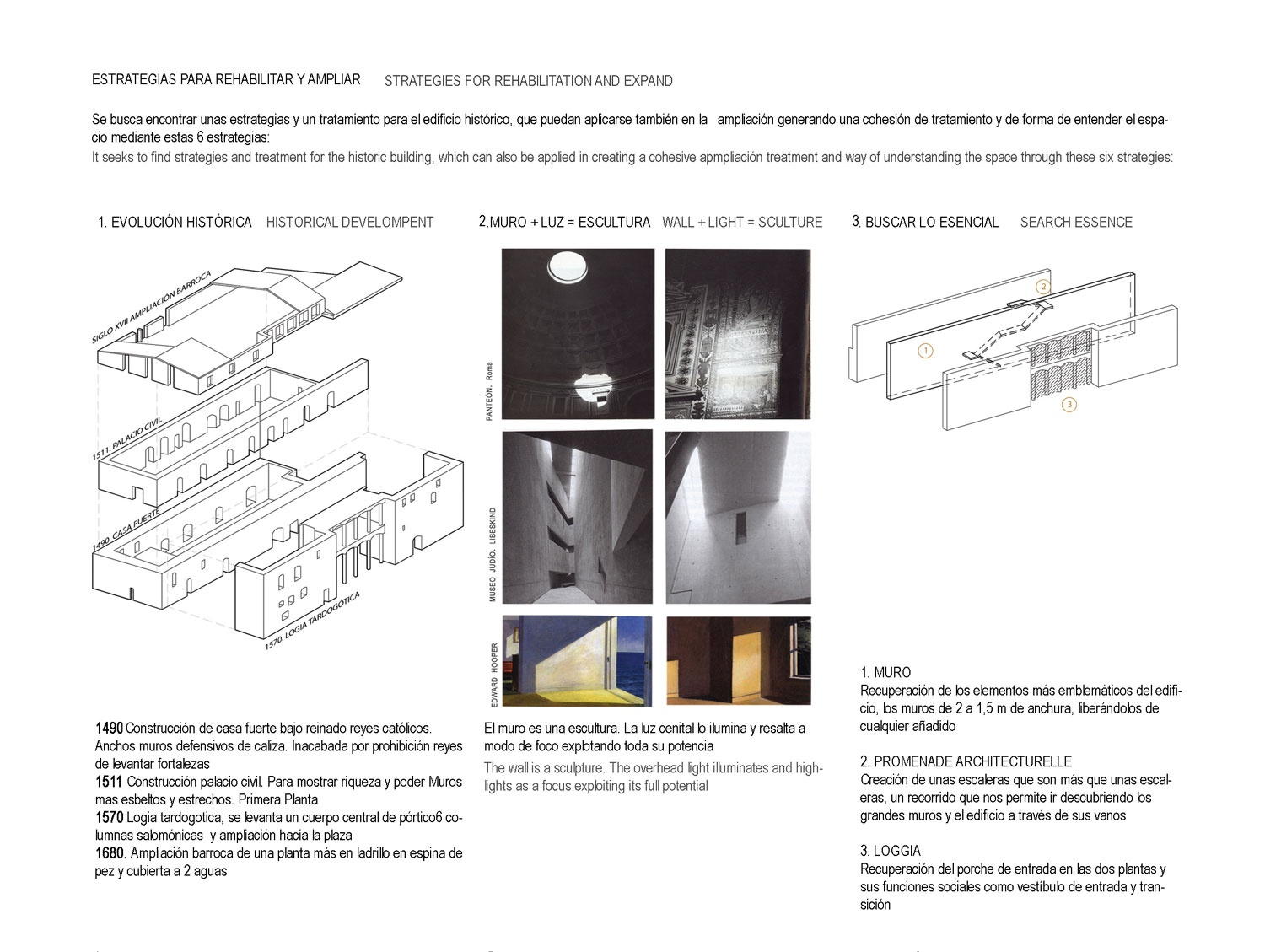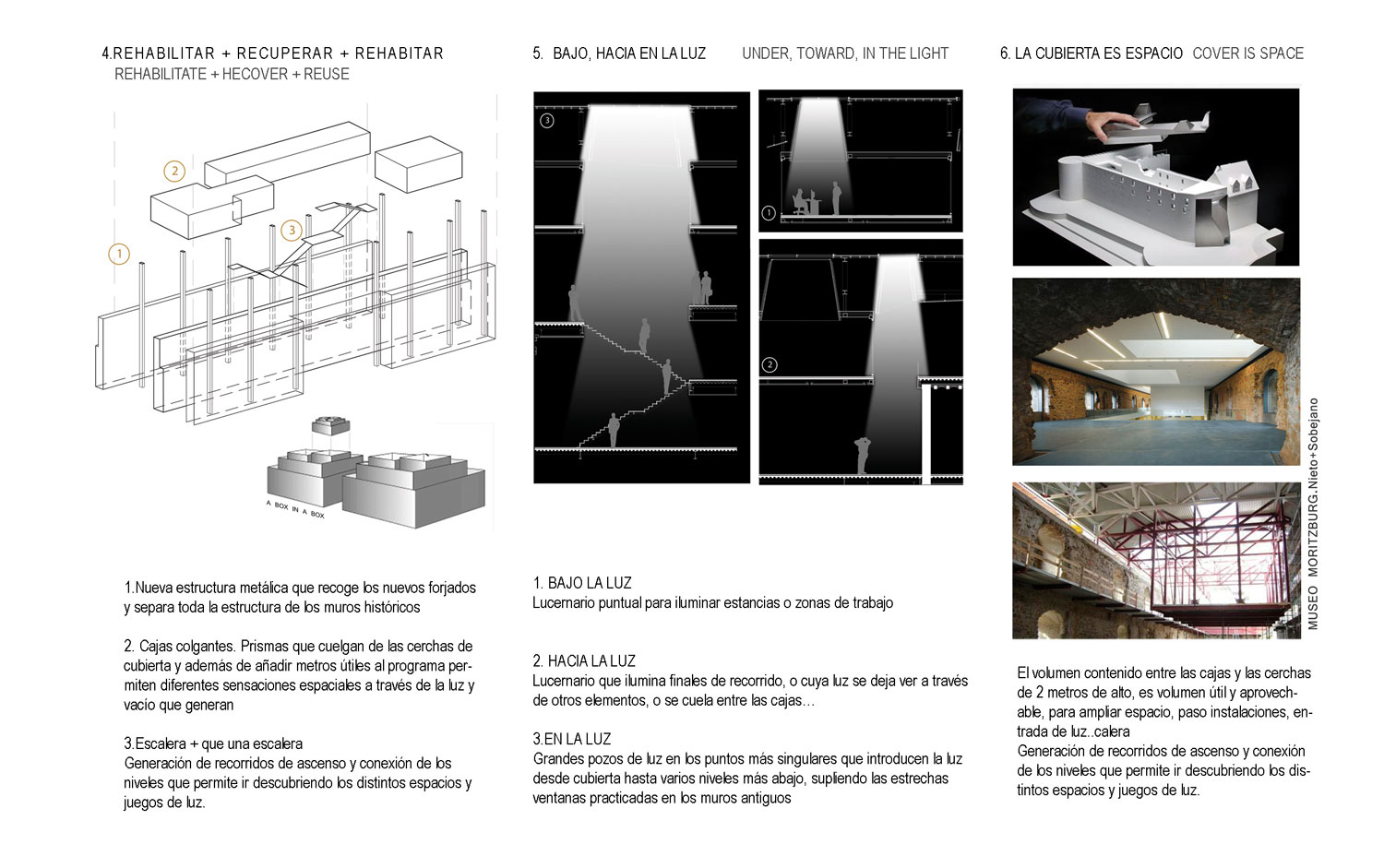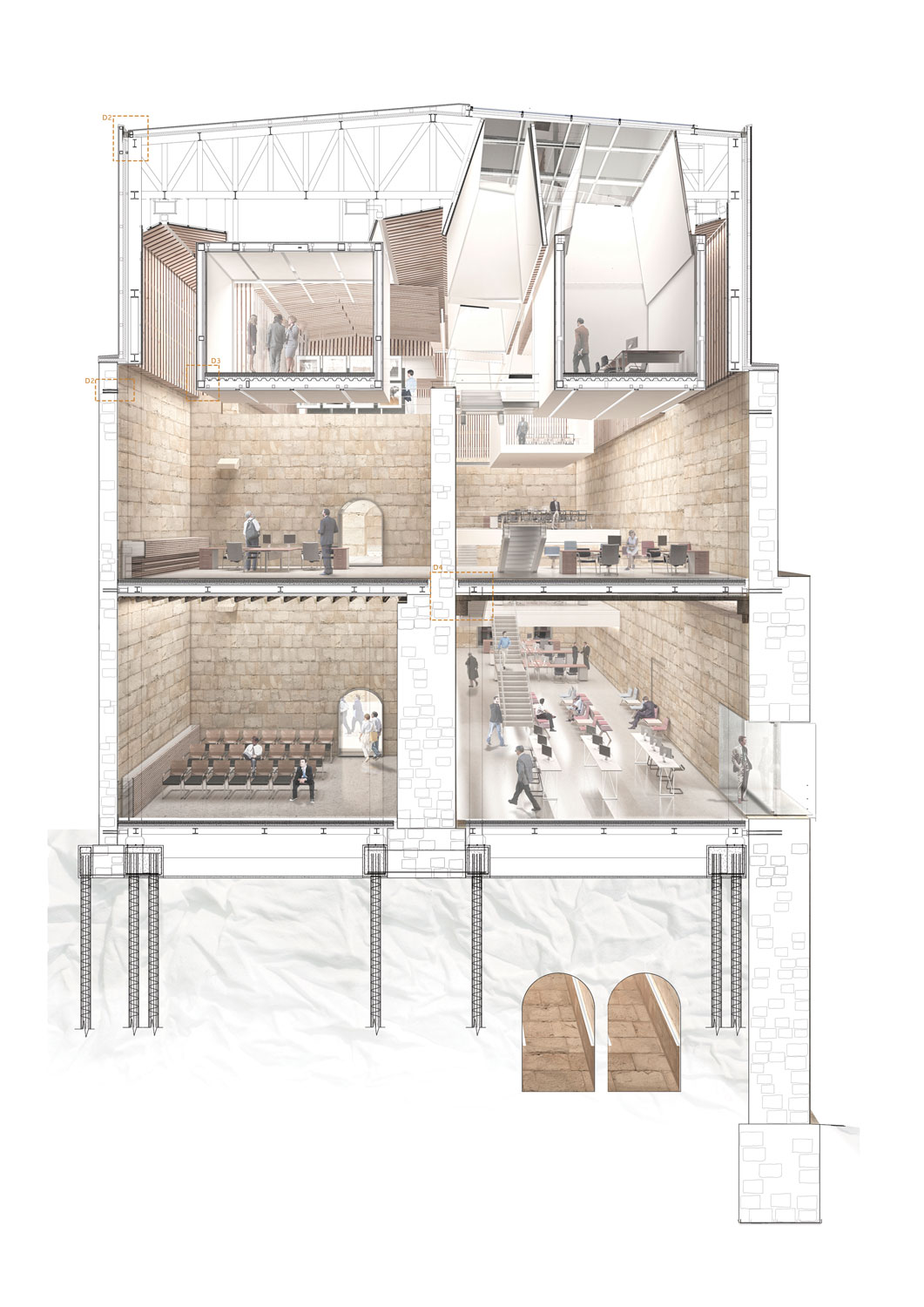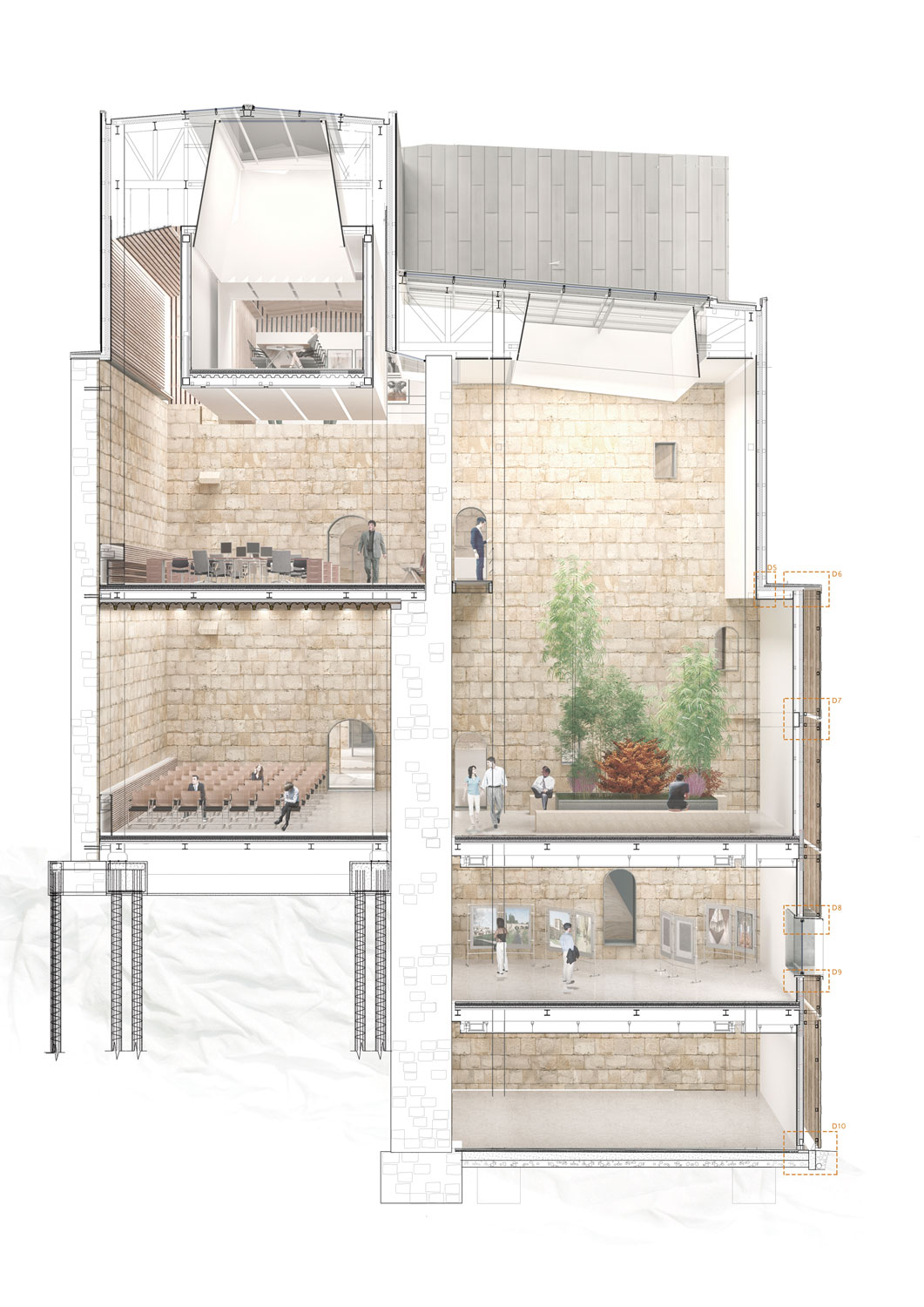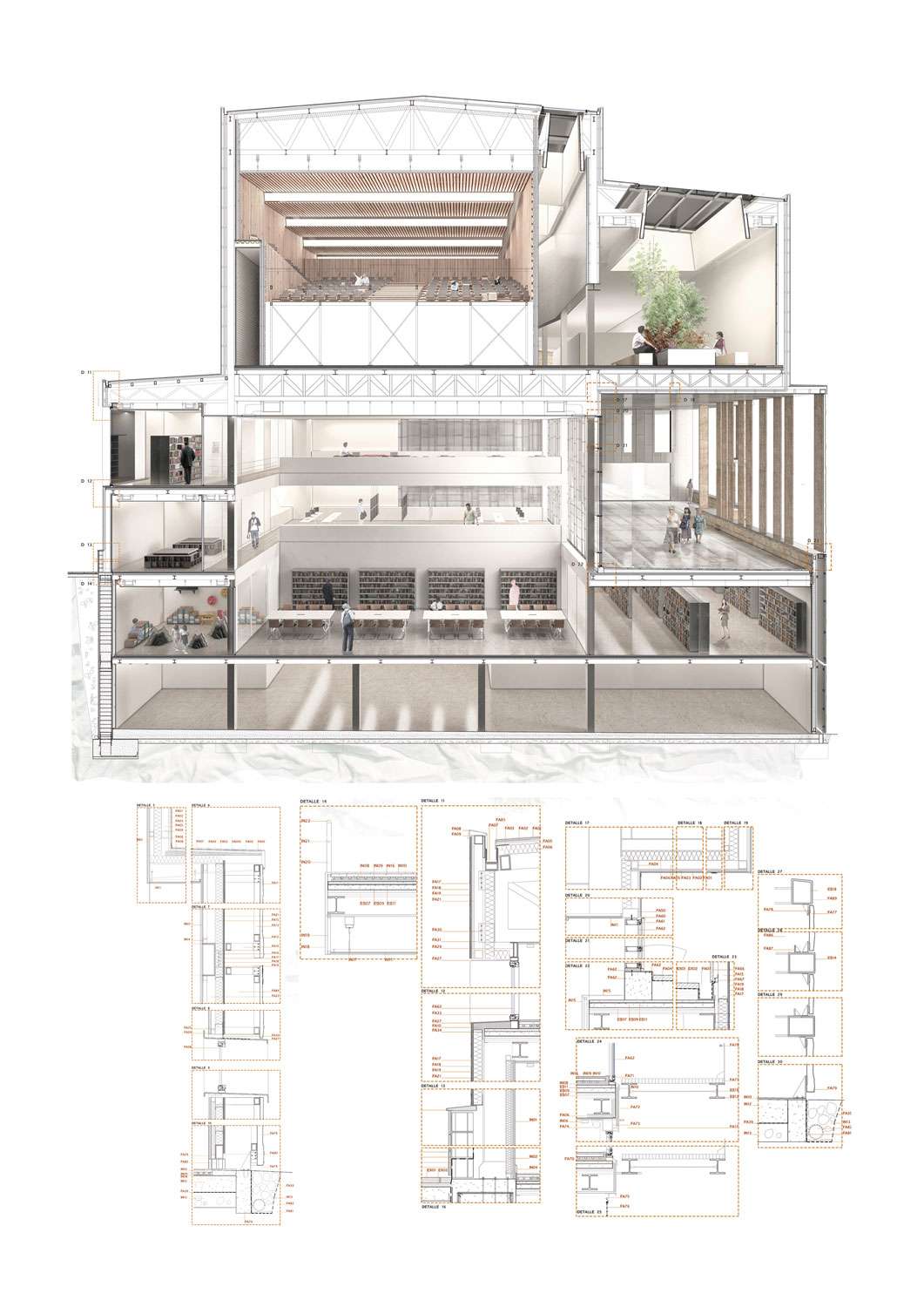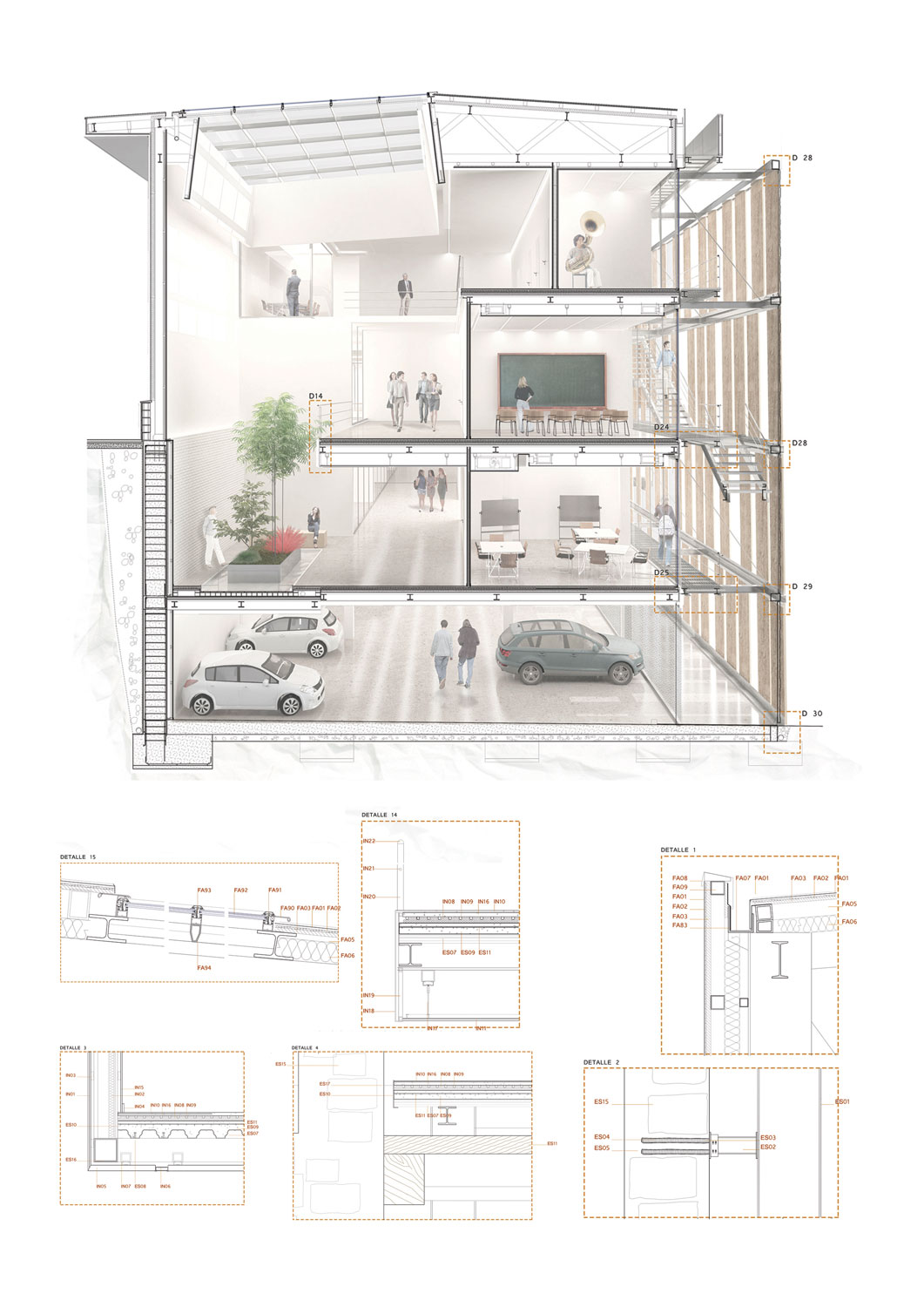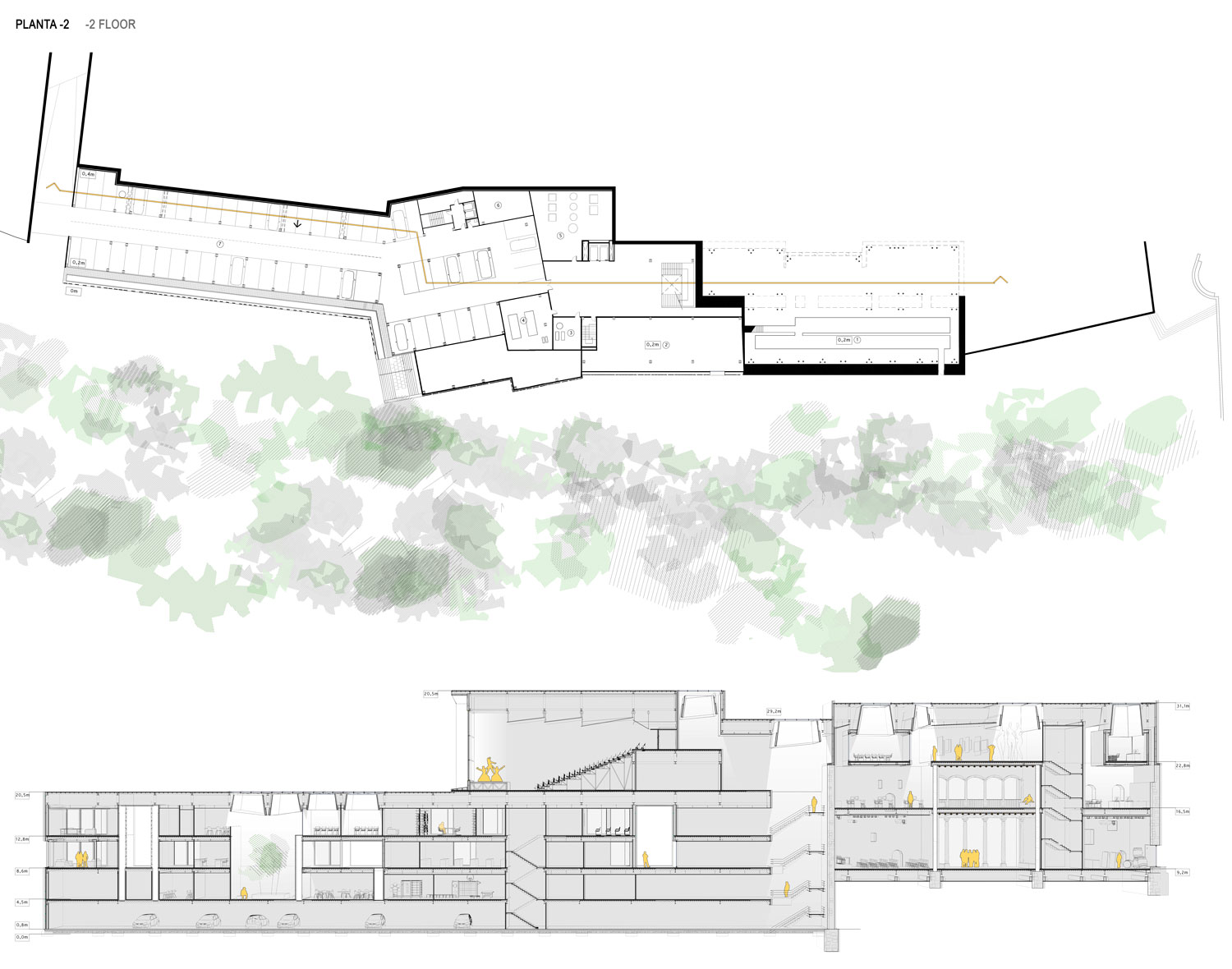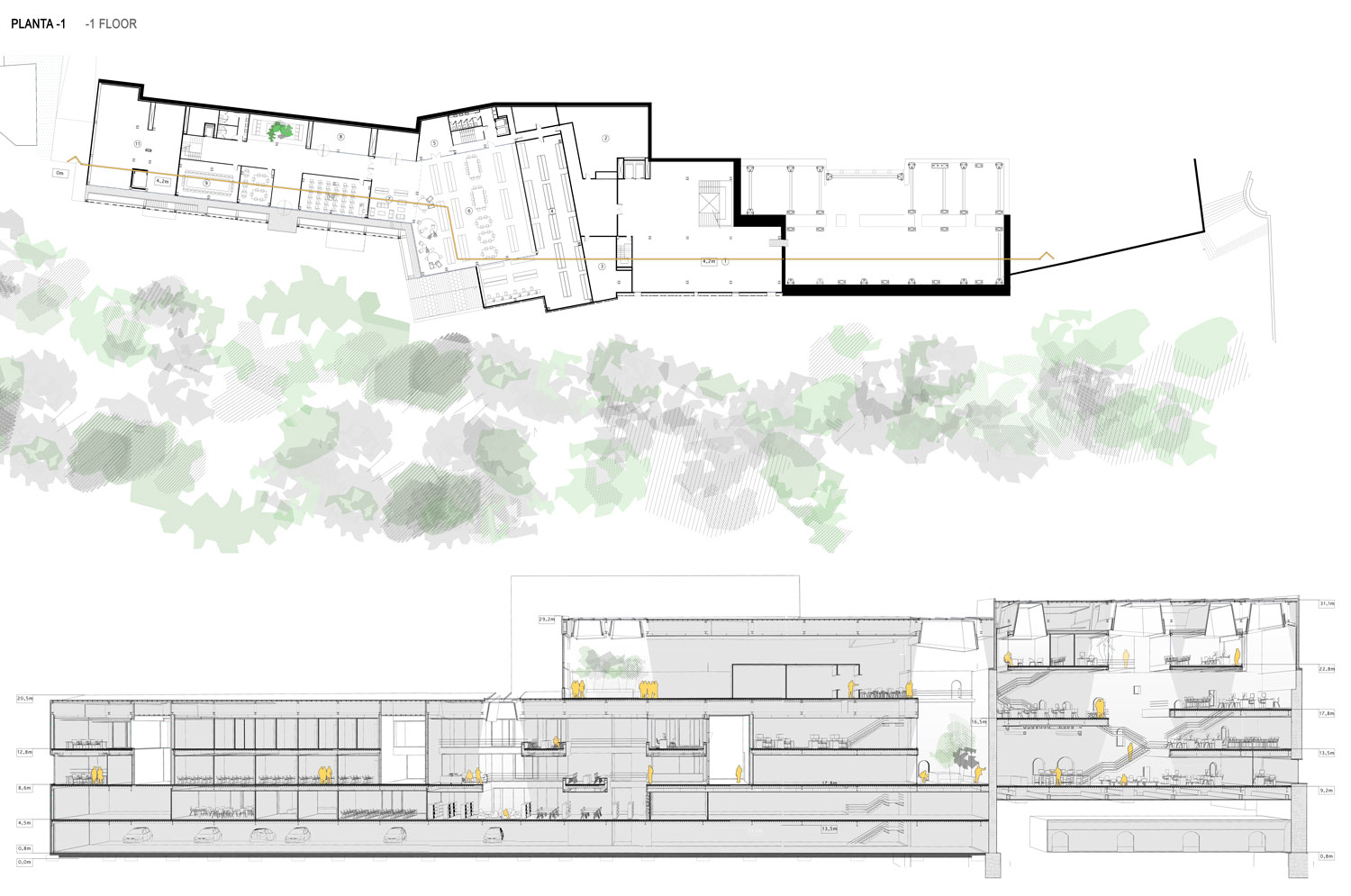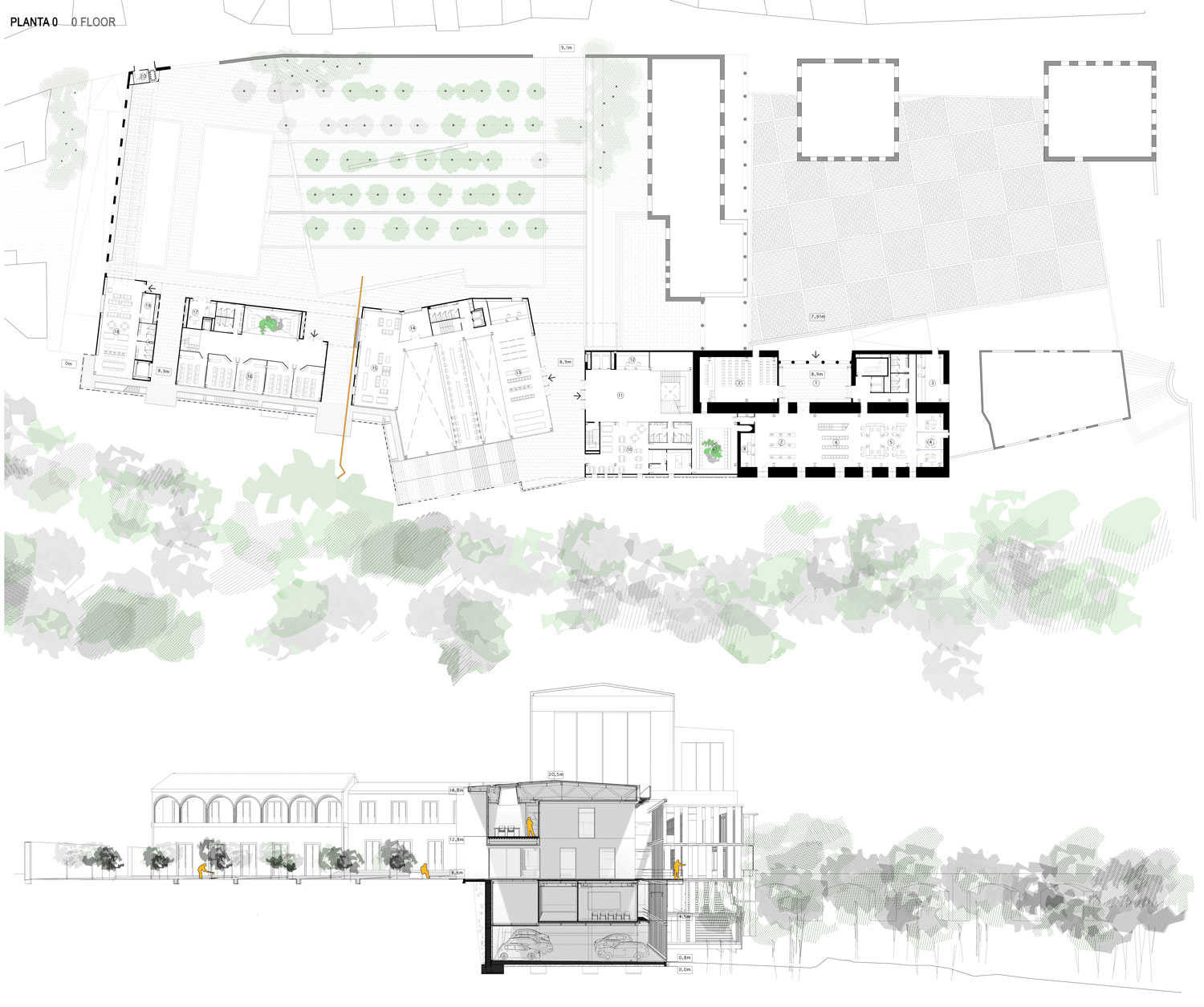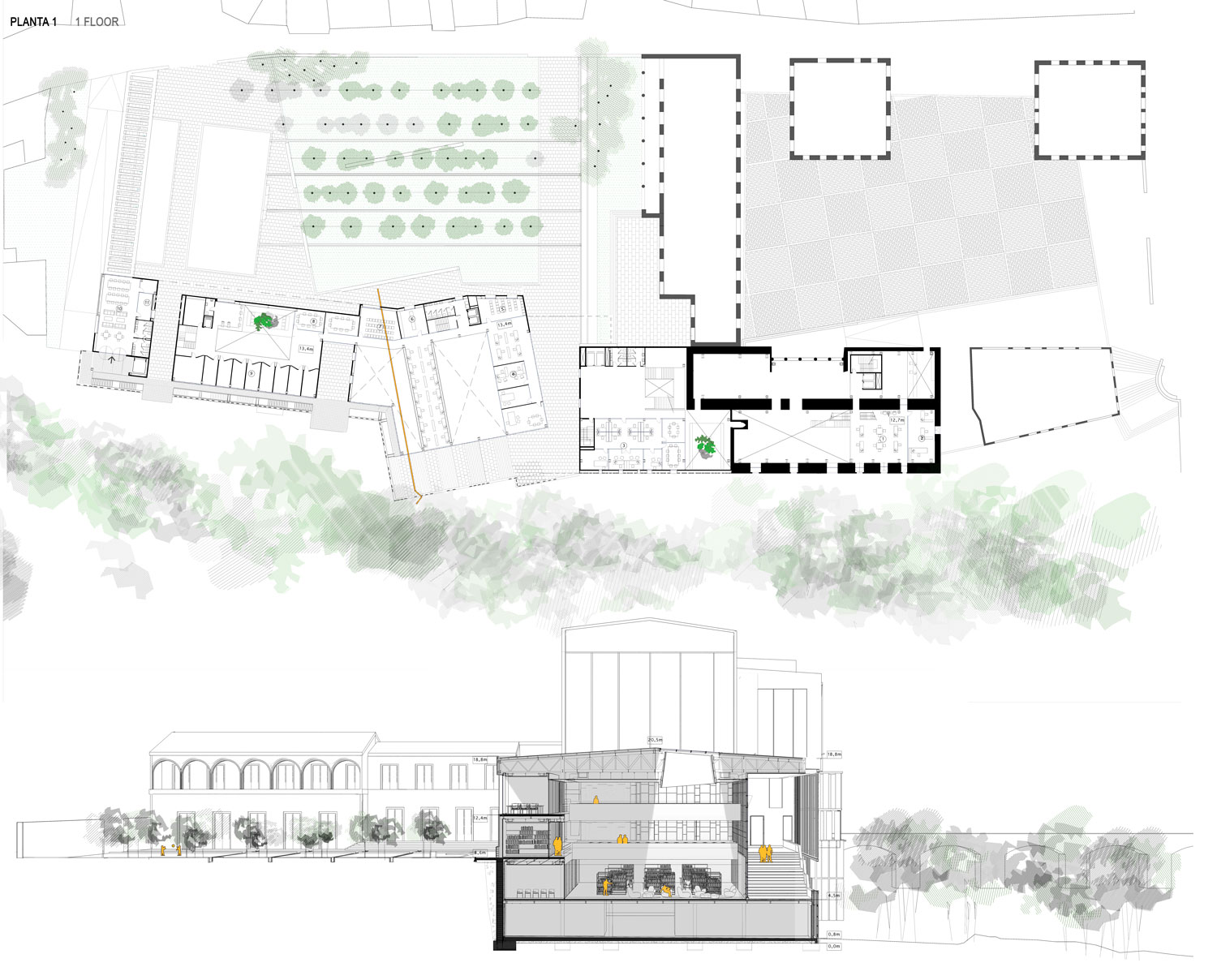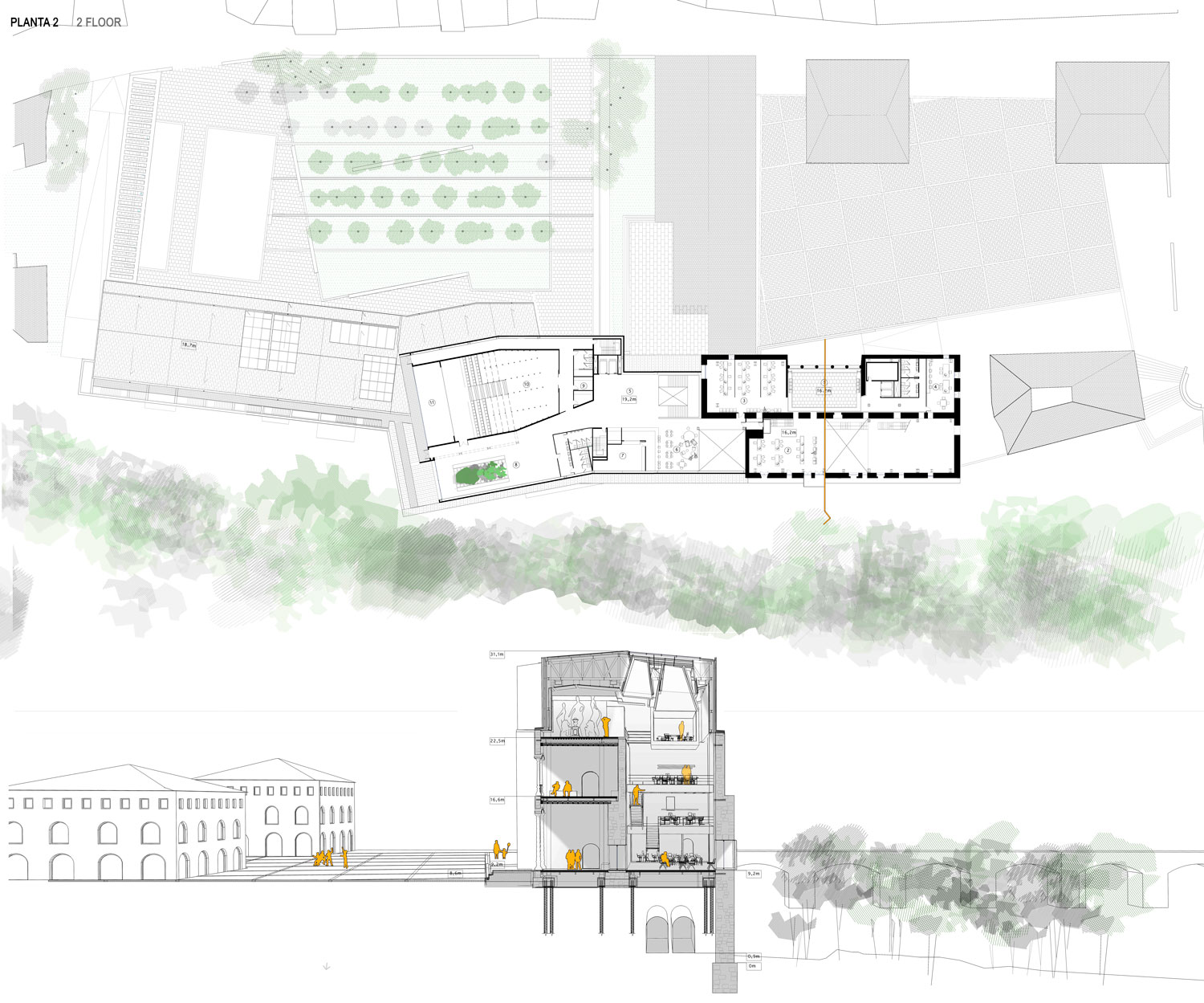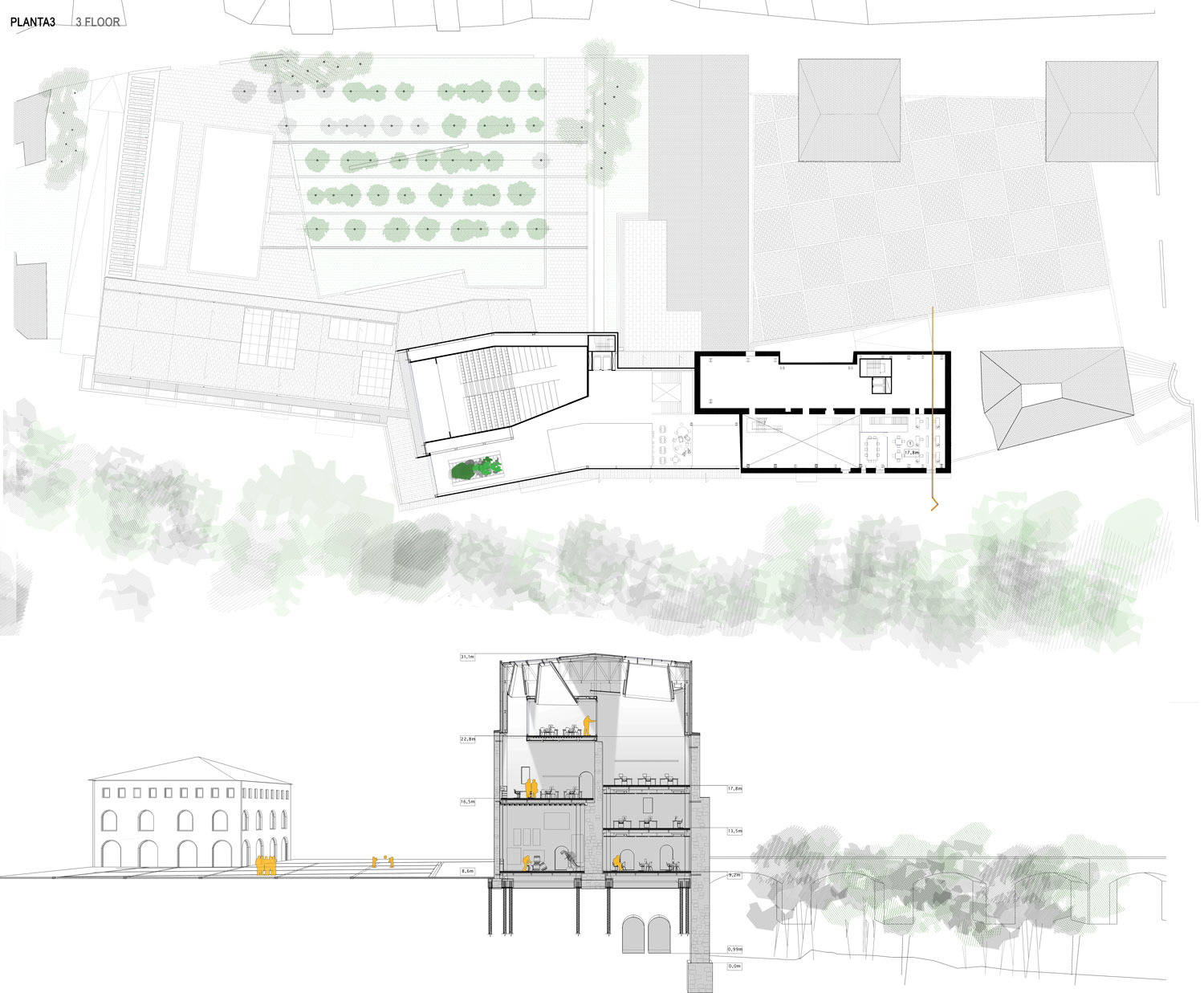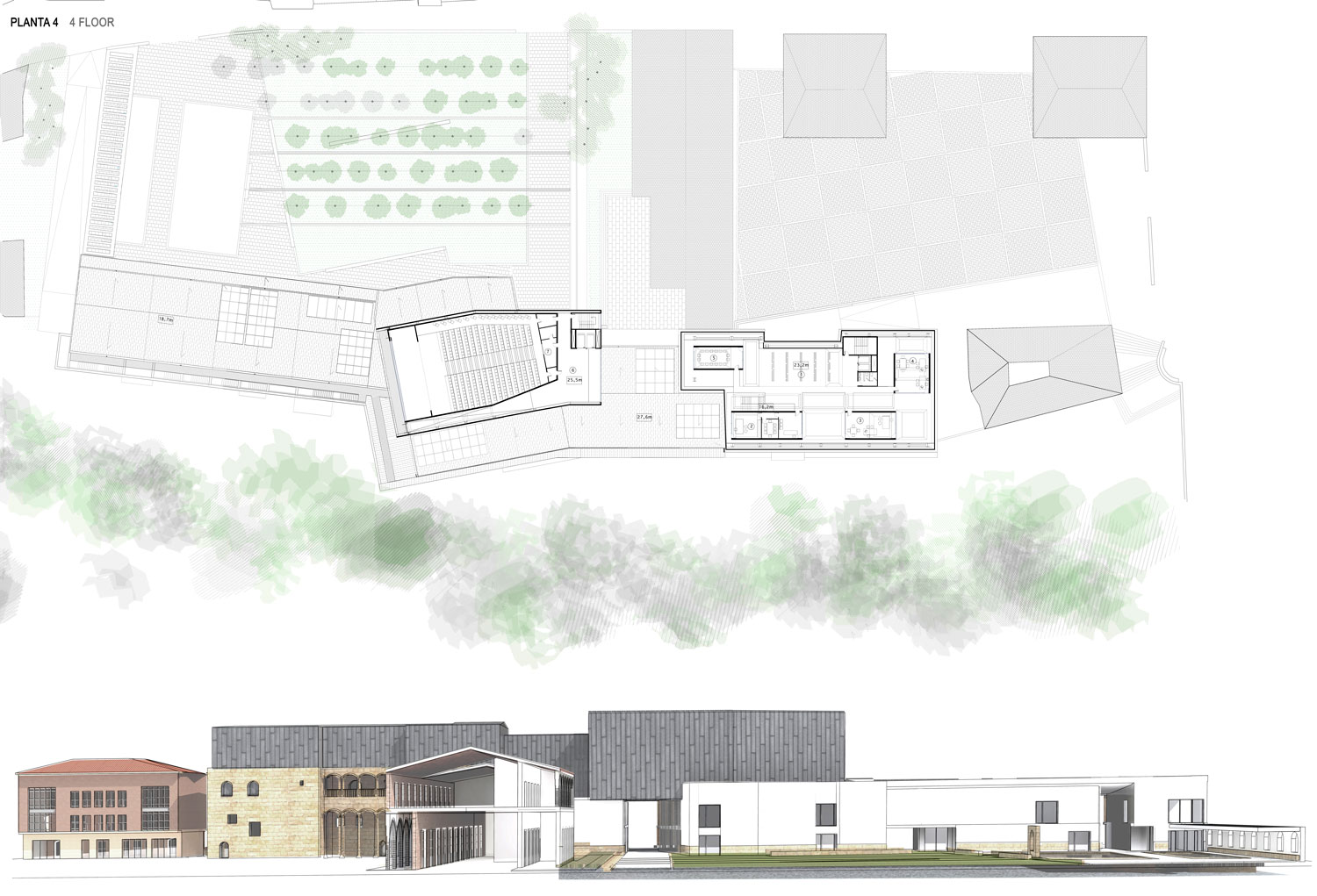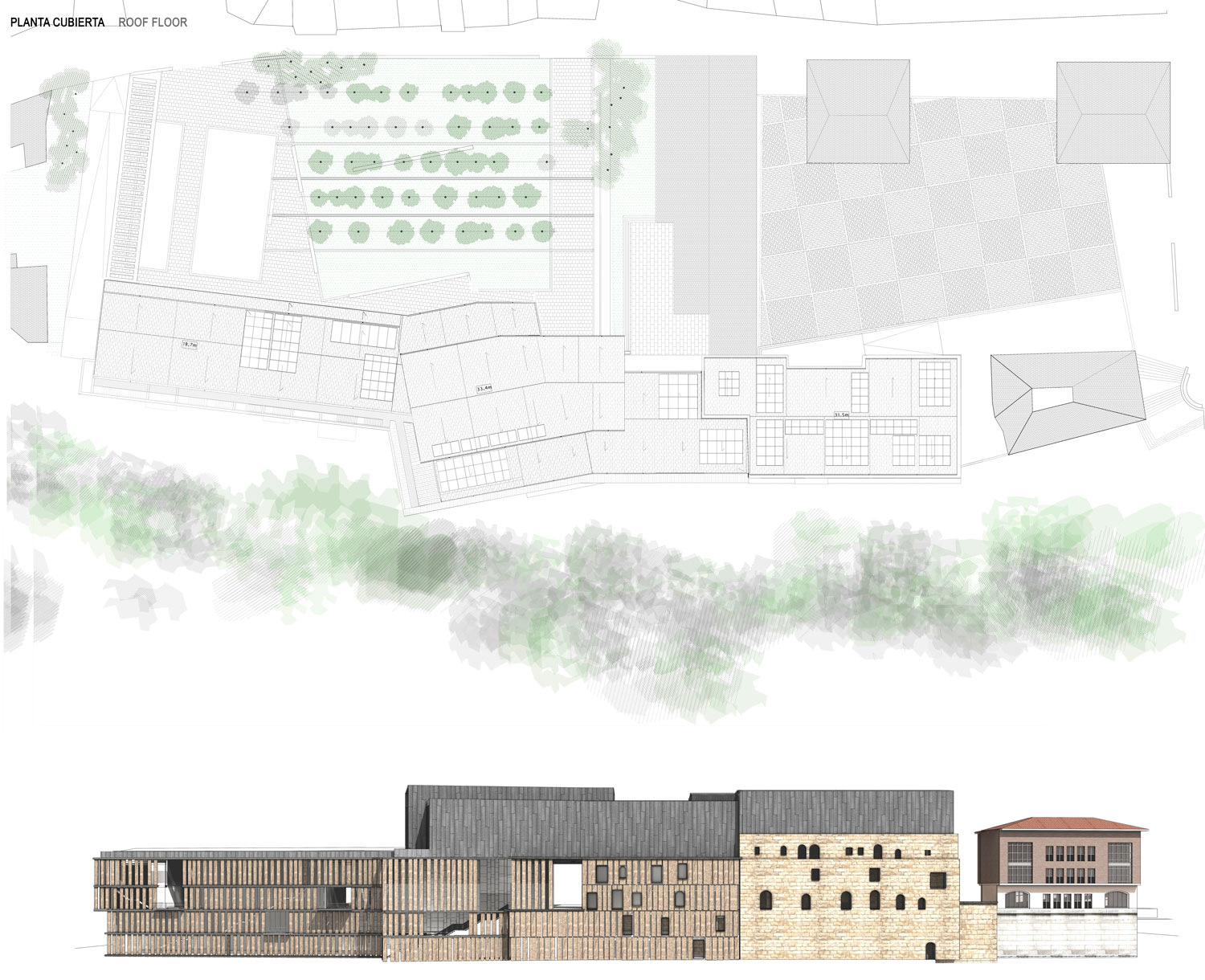1242-RLA-ES-2015
Client: ETSA Barcelona
Status: Academic
Location: Casalarreina, Spain
Coordinates: 42.548917, -2.9134833
Climate: Continental, Temperate
Material: Stone
Environment: Old town
Visualizer: Studio
Scale: Large
Types: Cultural, Mixed use, Refurbishment
In La Rioja, in northern Spain, two rivers, the Tirón and the Oja make a very fertile valley which is suitable for growing vegetables and fruits and where there are important towns of the Middle Ages.
The exodus in the period of economic crisis from the city to the countryside, and due to the rise of cultural and rural tourism it is necessary to modernize and complete the facilities and services for the villages around the valley.
Compared to the previous wasteful policies of building lots of facilities for every village, this project aims to create an entity of MEGA TOWN, gathering nearby towns which have around 500 citizens, to provide all of them with common facilities in a only village.
This villa chosen is Casalarreina, equidistant to all people and that more population counts (1300) and has more heritage and history. Also reaching a strategic point of passage between the route between Santander and Madrid.
The town has a huge medieval monasteior, numerous stately homes, palaces … and including the Palace of the Gunner, where he was admitted Juana the Mad, daughter of Ferdinand and Isabella, and spent time a medieval pope.
The project seeks to create this complex of different equipment rehabilitating part of this palace totally abandoned, and expanding and extending into the riverbank and river park.
The palace has lost most of the floors and walls of partners, leaving small fragments of historical coffered ceilings, the project respects. The only elements that remain unchanged are the great walls of masonry, where the design strategy is based.
Strategies for reusing and expand
It seeks to find strategies and treatment for the historic building, which can also be applied in creating a cohesive extension treatment and way of understanding the space through these six strategies:
Historical development
1490 Castle under construction in Catholic kings reign. Wide defensive walls of limestone. Unfinished kings strengths ban lifted
1511 Construction civil palace. To show wealth and power more slender and narrow walls. first Floor
1570 Gothic Lodge, a central body with twisted columns and and extending to the square
1680 Baroque.Large plant in a herringbone brick and roof with 2 sides
The wall
The wall is a sculpture. The overhead light illuminates and highlights as a focus exploiting its full potential.
Search essence
Wall: Recovery of the most emblematic elements of the buildings, the walls of 2 to 1.5 m wide freeing of added.
Promenade architecturelle: Creating stairs that are more than a few stairs, a path that allows us to discover the great walls and the building through its vain.
Loggia: Recovery porch on two floors and its social functions and entrance hall and transition
Rehabilitate, rehabitate and recover
New metal structure: That contains the new floors and separates the whole structure of the historic walls.
Pendant boxes: Prisms hanging from the roof trusses and also add useful program meters allow different spatial sensations through the light and generating vacuum.
Stairs are more than a stair: Generating ascent routes and connecting the levels that allows discovering the different spaces and lighting effects.
